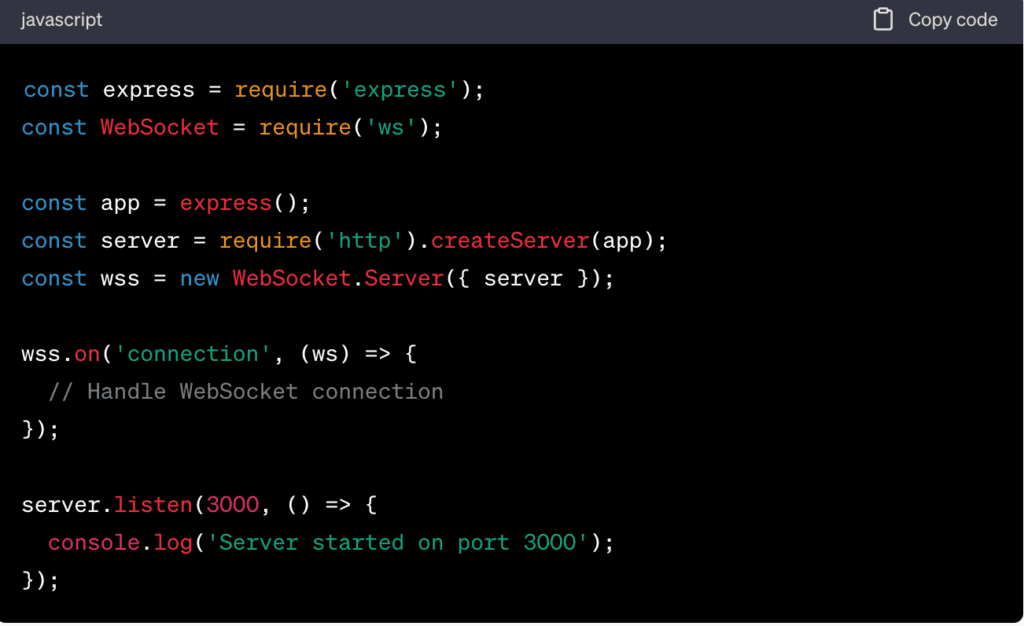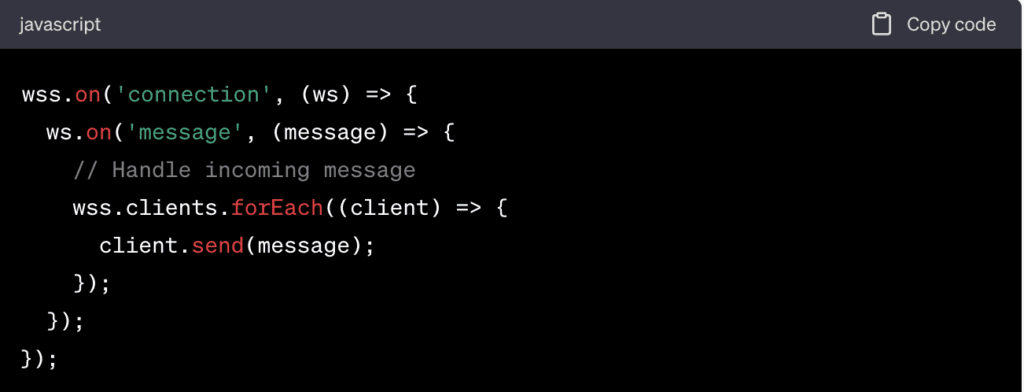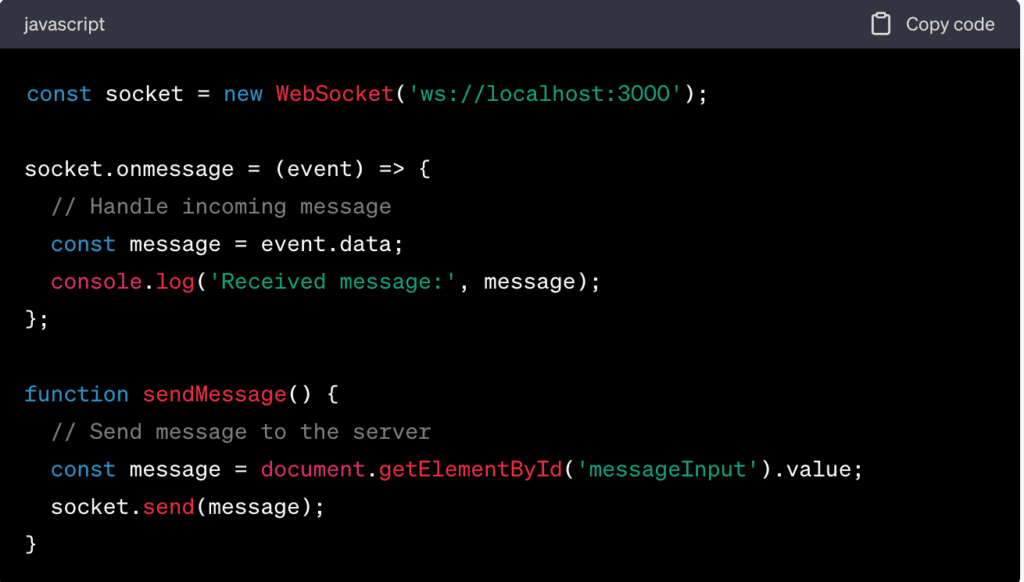In today’s digital world, real-time applications that demand fast data updates and communication between clients and servers have grown in popularity. Node.js, a strong JavaScript engine, along with Web Sockets, offers a unified solution for developing fast and responsive real-time applications. In this blog article, we will look at the foundations of creating real-time apps using Node.js and WebSockets, as well as present code samples to help you understand the ideas.
What exactly are WebSockets?
WebSockets are a communication technology that allows clients and servers to communicate bidirectionally via a single, long-lived connection. WebSockets provide real-time, two-way communication between the client and the server, as opposed to standard HTTP requests, in which the client begins contact with the server and waits for a response.
Configuring a Node.js Server
To begin developing our real-time application, we must first set up a Node.js server capable of handling WebSocket connections. Let’s start by creating a new Node.js project and installing the required dependencies:

Create a new file called server.js and add the following code:

In the above code, we import the relevant dependencies, construct an Express project, then use the ws library to establish a WebSocket server. When a new WebSocket connection is made, the wss.on(‘connection’, (ws) =>… ) event handler is invoked.
WebSocket Message Handling
We can manage incoming messages from clients and reply to them after establishing a WebSocket connection. Let’s update our server’s source code to receive incoming messages and disseminate them to all associated clients:

On each WebSocket connection, the code above listens for the message event. Using wss.clients, we loop through each connected client whenever a message is received.Use forEach and client.send to deliver the message to each client.
Application on the Client’s End
JavaScript may be used to create a WebSocket connection and manage incoming and outgoing messages on the client-side. Here is an illustration using JavaScript on a web browser:

We start a new WebSocket instance and give the server’s URL in the code above. We watch for the message event and process incoming messages using the event handler that is given. By invoking socket, the sendMessage method delivers a message to the server.send.
Conclusion
Bidirectional communication between clients and servers is made possible by building real-time apps with Node.js and WebSockets. We looked at the fundamentals of setting up a Node.js server, dealing with WebSocket communications, and adding client-side functionality in this blog article. Using Web Sockets and Node.js to their full potential.
